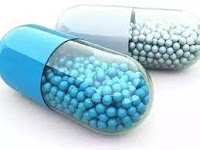Which oral drugs have the special usage?
Sustained-release dosage form refers to a dosage form that can continuously release the drug for a long time to achieve a long-acting effect after drug administration.
Controlled-release dosage form refers to a dosage form that can automatically release the drug at a predetermined rate within a predetermined period of time, so that plasma concentration of a drug is constantly maintained within the effective concentration range for a long time.
The principles of sustained or controlled release include dissolution, diffusion, dissolution, osmotic pressure difference, ion exchange and so on. According to different principles, It can be made into microcapsule type, osmotic pump type, framework type, etc. For osmotic pump type sustained or controlled release preparations, breaking or chewing will destroy the semipermeable membrane and fail to achieve the effect of releasing drugs. For a few number of framework type or microcapsule type drugs containing multiple independent units, it can be breaking to take. But it should be splitted according to the scratches on the tablet.
2. Enteric-coated tablet
Enteric-coated tablet refers to a tablet that does not disintegrate in the gastric juice, but can be disintegrated and absorbed in the intestinal juice. It is generally coated with an enteric coating on the outside of ordinary tablets. Therefore, only by maintaining the integrity of coat can make the drug be released at a set speed and location to achieve the purpose of slow and controlled release. That make the tablet must be swallowed as a whole, not broken or chewed. If it is broken, it will cause a sudden release of the drug and lead to adverse reactions.
Effervescent tablet uses organic acid and basic carbonate/bicarbonate salt to react as effervescent disintegrant. When placed it in water, an effervescent reaction occurs immediately. It will generate and release a large amount of carbon dioxide. Effervescent tablet must be dissolved in water before it can be taken. It can't be directly taken.
4. Chewable tablet
Compared with general tablets, chewable tablet does not contain disintegrant. The drug is difficult to disintegrate when swallowed as a whole tablet. The dissolution of the active ingredients is reduced and the drug may not achieve the therapeutic concentration.
Due to different preparation processes, the same kind of medicine produced by distinct manufacturers may require different methods of administration. Read the instruction carefully before taking the medicine, and do not determine by yourself.











0 comments:
Post a Comment
Welcome to leave your comment.٩(⚙ᴗ⚙)۶